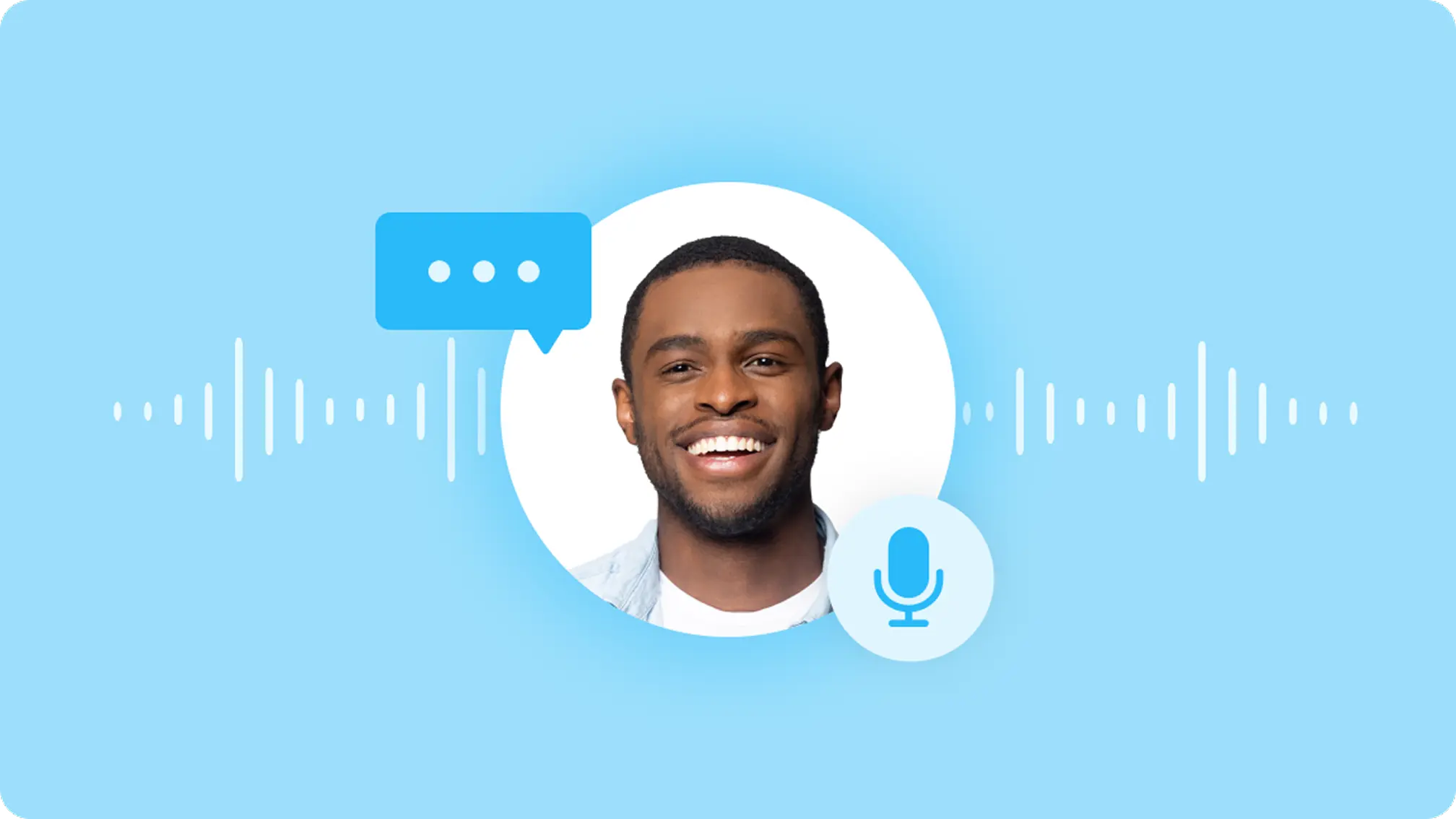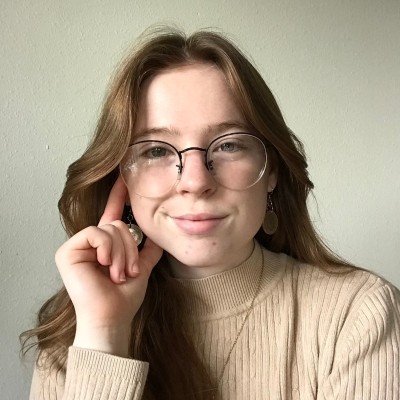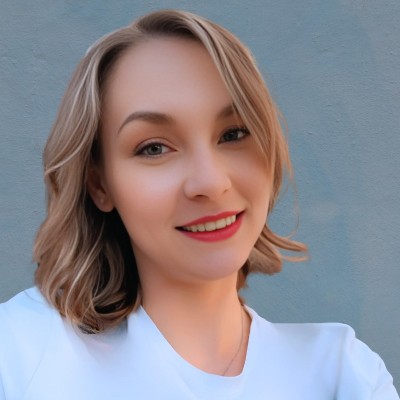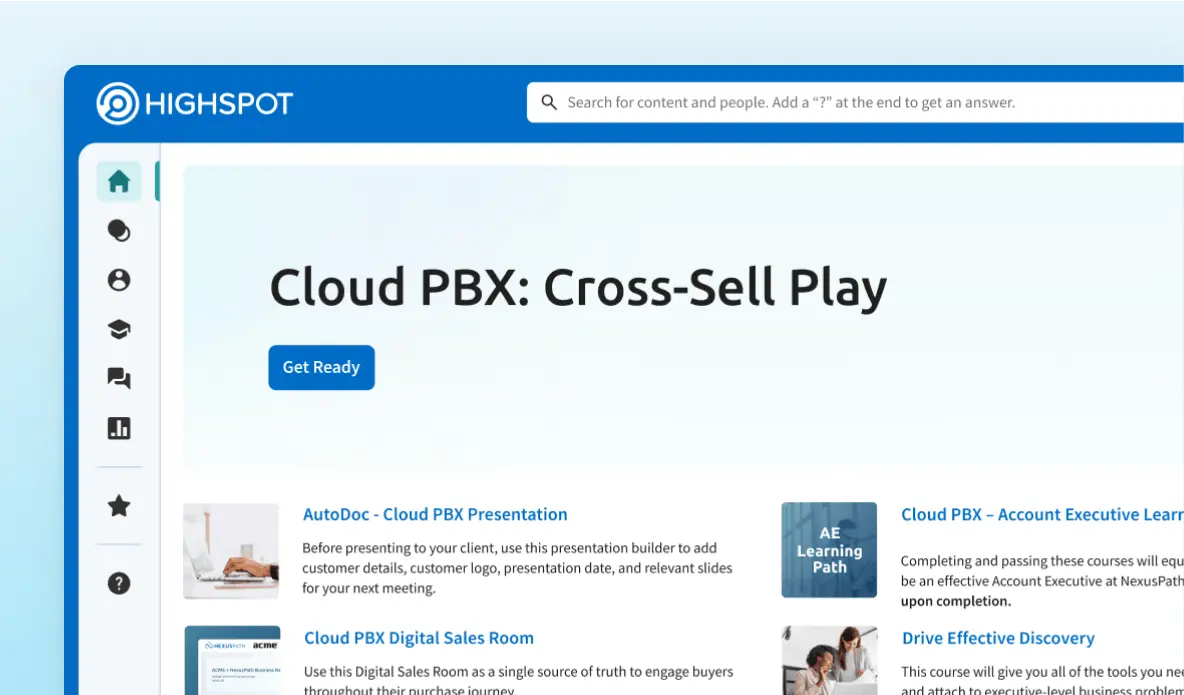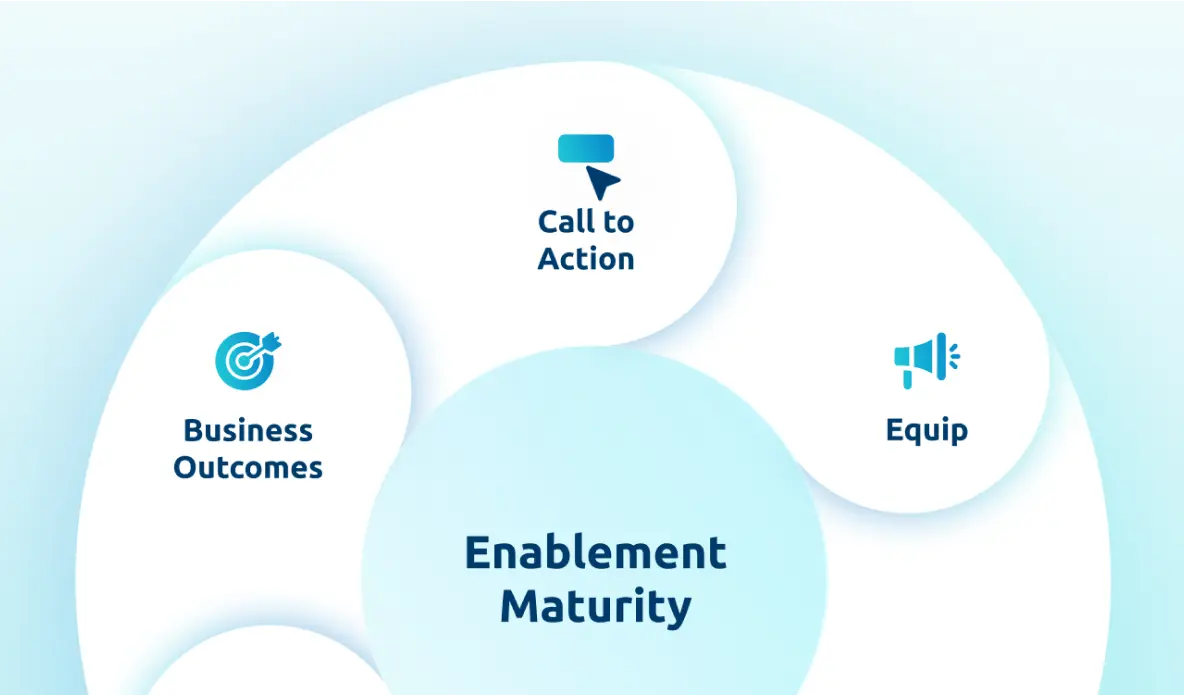According to research from Revenue Grid, organizations see a 25-40% increase in average deal size and win rates with better coaching. So how can you build a strong coaching program that helps your team win, especially with the support of new technologies like AI?
Riley Rogers: Hi, and welcome to the Win-Win podcast. I’m your host, Riley Rogers. Join us as we dive into changing trends in the workplace and how to navigate them successfully.
Here to discuss this topic is Carrie Kuhrt, who leads sales enablement in the Americas for FCM Travel. Thank you so much for joining us. Carrie, I’d love if we could just start by talking a little bit about yourself, your background, and your role.
Carrie Kuhrt: Lovely to be here again. My name’s Carrie Kuhrt, based in Denver. Most of my professional journey has been within sales, whether that’s inside sales, outside sales. Been with FCM for nearly six years now, and just for over two years, I’ve been in the enablement function for the Americas region. Just been an adventure for the last six years with FCM, and I am just all team enablement now.
RR: Awesome. Well, we’re so excited to have you here, especially knowing that you’ve kind of bridged that gap from sales to sales enablement and can bring that dual perspective to this conversation. So I know before your current role as an enablement leader, as you mentioned, you worked in sales at FCM Travel, so can you share a little bit about how you made that transition into enablement and then how that background maybe shapes your enablement approach today?
CK: Yeah, well, kind of a funny story. I actually rejoined FCM after the pandemic the same day Highspot was rolled out with FCM. So it was just really kind of funny timing, how it’s all come really full circle. So I’ve always found myself wanting to help others succeed, and I have just a really big — like, I just really love all of the enablement tech stack and thought it just is an absolute game changer for the selling role and found myself always helping or always wanting to lend a helping hand to my peers.
And so when the opportunity came up to join the enablement team, I eagerly embraced it, wanted to help fine-tune our sellers and using that enablement tech stack that the business has invested in.
RR: Amazing. I love that take, and I love that this full-circle moment. I’m so happy you could join us and kind of bring this story almost to its conclusion.
I’d love to maybe double-click a little bit into your approach and talk specifically maybe about how you develop your teams. So I know you lead the development of training and coaching at FCM Travel, so I’m wondering if you could talk to us a little bit about some common challenges you’ve faced when creating effective learning programs and then maybe some solutions you’ve created to address ’em.
CK: Yeah, just knowing myself as a learner, we all learn in a different way, so I wanted to make sure that when creating something, it’s important to incorporate all the different learning styles that people have, whether that is through videos for people who’d like to watch, or people who like to read, or just a little bit of a mixture, and then including the hands-on approach.
I really like the knowledge checks that you can do where it’s a little bit less test-centric and a little bit more of just making sure everyone is understanding that information and having it kind of connect the dots in their mind. So I think that’s always really good to incorporate in having like a welcoming and affecting learning environment for everybody.
Just knowing that not every single person is the same. You wanna be able to have the ability to kind of touch everybody in the way that they need to help understand any initiatives.
RR: Yeah, I think one of those biggest challenges too — any sort of learning program — is the assumption that one-size-fits-all works.
It never does. I love that approach and that acknowledgement that everybody learns differently, and in order to get where you need to go, you need to meet them where they are. I think definitely a very actionable take that listeners can take away.
Shifting gears a little, I’d like to touch on an aspect of enablement’s role that I think maybe goes a little bit unspoken, which is that in addition to creating effective programs, enablement is often tasked with building a culture of ongoing learning and development. So do you have any best practices for creating that culture and driving that culture of ongoing learning?
CK: Yeah, I like to talk about it as kind of like an internal sell.
So having that sales background kind of comes into play here, and we’ve actually branded our training and coaching as Take Flight. Being a travel management company, we love the puns. It worked perfectly. And so with Take Flight, we have created logos that you’ll see everywhere within Take Flight, as well as the same imagery over and over again, just kind of helping to reinforce this is where you go to learn, to upskill, to onboard, whatever it might be.
And so using those on all of the training materials, helping everything remain consistent, it helps kind of guide your users to where they need to be for that training and coaching, because training and coaching — sometimes people might be like, oh, I don’t wanna do that — but Take Flight sounds so much more fun.
I mean, who doesn’t wanna take a flight, hop on, and go somewhere new or learn something new? So that’s kind of the approach we have taken.
RR: Yeah, the internal sell. I love it, and I love the branding. That’s so much fun. Your sellers are your customers, and I think you’re serving them well.
I’d like to maybe chat a little bit about how you’re using technology to support programs like these.
I know that in May, actually, you joined us here in Seattle for a workshop in the Highspot office. We chatted about real-world coaching capabilities, and you shared that you’re working on a pilot program to roll some of them out to your teams. So can you talk us through how you’re developing this pilot program and how you plan to leverage these capabilities to help with that ongoing learning culture?
CK: Yeah, so we like to roll out all of our initiatives through pilot programs. We are leveraging Highspot across all of our sales organization globally now. And so having the peers involved — for my customers, our internal sellers — it’s really helped involve them and being able to be more impactful and engaging, understanding they are in the seat, they are utilizing it, and so using those pilot programs to help reinforce what’s gonna work best and being able to kind of test things out before full rollout globally.
It’s just incorporating even those champions, as we like to call them, in part of the training so they’re able to talk about their experiences during the pilot testing as well.
RR: Yeah, that sounds like a really thoughtful approach to a pilot program. You know, you build buy-in with a few, and then that kind of disperses out, and then all of a sudden you’ve won over the entire team.
I’d love to know a little bit more about that like early getting-started phase — so how you’re planning to identify and select users for your pilot, and then maybe once you have selected those soon-to-be champions, how you enable them on your new approach.
CK: Yeah, so we tend to select champions based on those who use the platform quite a bit.
So our top users, they help guide us. And for the meeting intelligence pilot that we’re working on right now, we’ve chosen about five champions in different roles within the sales org and each region to start using the feature. So they’re gonna collaborate with myself and my partner in enablement that sits in Europe to help navigate those best practices, figure out what does work well, where we can improve, and like just sharing the feedback on the process because it is something brand new, something that we’ve never done before.
But why not have like a test phase to work out those kinks before you roll out something globally? Just wanting to make sure that we have everything sorted and ready to go to make it as easy of a change as possible with — I mean, change management being key. It’s a new feature.
Not everybody’s gonna be comfortable with it. You’re gonna make some people a little uncomfy, so why not bring in people who are in their same role, who can help kind of drive the value of it home?
RR: Yeah, again, because you know when you are making that internal sell, you do need that evidence. And so when you have people in those roles speaking to it, you have a little bit more validation than just you kind of top-down being like, “Hey, let’s do a thing.” So I love that approach. And it seems like you and the team have obviously put a lot of work into this new strategy.
So I’d love to know, maybe as you’re progressing, what outcomes you’re hoping to see and then what success looks like for you. What, at the end of the day, would make you be like, we did what we needed to do?
CK: Yeah, I think for kind of the initiative, initial purpose is — as we all know — technology is fantastic except when it doesn’t like to play nicely.
So working out those bugs is a huge part of it. That’s not something that might need our attention, but we carefully check and make sure all the platform integrations are working smoothly, kind of working those out beforehand, even before the pilot group even starts.
To be completely honest, I’ve been within meeting intelligence since I could — I mean, just trying it out so I can figure it out, understand it, ’cause I am that hands-on learner, kind of talking back to how we approach that. But making sure that we have everything for the AI part of it — we are very much invested in AI. We have an AI Center of Excellence here within Flight Centre Travel Group, and so really leaning on that and making sure that the results that we’re getting do work for our business, as well as kind of those topics that meeting intelligence does use, making sure that we have everything listed that makes the most sense.
And until we have users actually in-platform using it, we won’t know that. And so that’s kind of where we’re looking to make sure everything’s — all the boxes are checked, that it’s gonna have the most impact on that feedback portion, because at the end of the day, that is what it’s all about — being able to get that feedback from an AI perspective to then have their manager come in and help drive home that feedback.
RR: Awesome. Well, I think you guys are looking at all of the things you need to, to set yourself up for success, and I’m excited to check back in a couple months and see how things are going and see, you know, kind of the early wins you’re achieving.
But speaking of success and wins, I know you’ve actually found quite a bit already. For instance, we’ve heard that you’ve already achieved a really impressive 67% active learner rate in Highspot, so I’d love to know how you’re driving that adoption.
CK: Yeah. Again, I think this goes back to that branding aspect of Take Flight. Everybody knows where to go, and having it in like one centralized spot — just knowing that. But also, we do a lot of group enrollment for courses and things of that nature so that it’s everybody globally is doing it. It’s not just singling out certain people or certain regions — everyone is taking part of it.
And I mean, I don’t think I’ve ever been in a sales role where every one of my peers doesn’t have that competitive spirit. So we do throw in some contests in there — some incentives. Salespeople love the incentives. So when we can make it a friendly competition, it even helps drive it home, ’cause it’s like, I wanna beat you.
Like, you have that competition, and it helps really drive that end result of getting people involved in the training and the coaching, the lessons, all of that adoption. I mean, I know our adoption across Highspot in general is really, really high, which I think kind of talks about what the platform has done for us as a business.
RR: Well, amazing. I love to hear that. And so what I’m taking away is that adoption is purely just a combination of branding and competition. That’s what you need to get your salespeople activated.
CK: You can make it more complicated than that, but at the end of the day, they need to know where to go and who to beat. And so I think that really plays a huge part of it, for sure.
RR: Wonderful. I love it. Well, aside from, you know, the impressive active learner rate that we just chatted about, I’d love to know what metrics you’re looking for when you’re evaluating the success of an enablement program — and in particular, down the line as you’re evaluating the success of your new real-world coaching program.
You know, as you were saying, you wanna make sure the metrics are working towards what the business is looking for. So what will you be looking for when you’re making that call?
CK: I think a huge thing — and it’s something that I got to see back in Seattle in May — was the initiative scorecard. To be able to link what we’ve rolled out as an initiative, whether that be training and coaching, or the meeting intelligence and that real-world feedback — being able to see that directly reflect.
We finally worked out all the kinks with the Salesforce integration to making sure everything is linked. So now we can see, all right, based on this date and this initiative rolling out, we can see those wins populating and compare it to where we were last year.
So being able to see the just direct correlation between the two and positively influencing our conversion rate equals won business.
RR: Awesome. So it’s that tracking activity all the way through outcome — so important to prove your impact as an enabler and really tell that your programs are doing what you hope they will.
Again, excited to see how in a few months, as you’re setting that up, how it goes. We’ll certainly have to check back and see how things are going.
Thinking a little bit — we’ve been talking about the future — but let’s talk about the present maybe, which is, I’d love to know how, since launching Highspot, how things are going, what results you’ve seen, any key wins, notable business outcomes you could share? Anything that you and your team have accomplished recently that you’re super proud of?
CK: Yeah. To be completely honest, Highspot has been a game changer for us at FCM. It’s made a remarkable difference, saving our sales team so much time. I won’t talk about other platforms, but they can find things a lot faster than they used to be able to, and so they can pull information in 30 seconds if they’re on a call with someone or they wanna share that information with a prospect — they can do that very, very quickly and find what they need.
And I think that’s like a collaboration between sales enablement and marketing to make sure all of that is housed and easy to find for our sellers. I think it’s also really helped us connect more on a global scale. We can see what’s going on in other regions instead of being siloed between regions with the time zone conflicts and all of that. It’s just made an enormous difference.
And then the other thing, which we’ve rolled out — I’d say probably in the last six months or so, maybe even… maybe it’s almost been a year, gosh, time flies — a lot of our RFP submissions, so our business proposals, if it’s not through a specific platform, we utilize Highspot. And that is a differentiator.
Because we like to say we are not just another vendor for our clients. We are a true partner. And so we can actually put forth our proposal and have that partnership show through — whether it’s the co-branding of our logo with their logo. Sometimes we get a little fun and have a little bit more of that collaboration in terms of the coloring and things like that in the Digital Room.
It’s definitely marked us as a clear differentiator. We’ve heard feedback from our — previously prospects, now customers — that it is something that has made a huge difference because it does show that we want to partner with them. We don’t just want to be another vendor. We’re not just another contract for them to sign. We truly have a partnership with our clients.
RR: Amazing. I love to hear how Highspot kind of fits into your goals as an organization to be that partner, and I’m so happy that we can kind of help along the way where we can.
Just one last question for you. So to wrap up, what is one, maybe two pieces of advice that you would offer to enablement leaders who are looking to build successful coaching programs?
CK: I think there’s no necessarily need to reinvent the wheel. A lot of us already have a lot more of that material — the training materials — in our arsenal. It’s existed.
We haven’t been able to onboard people without having training and coaching. It exists. And so being able to just improve upon it — having gone through and recently taken just our very static playbooks for onboarding and turned them into courses and lessons just to make it more interactive and not just as stagnant — but keeping kind of those playbooks in place so that they can refer back to them whenever they need to.
But like, not having to reinvent the wheel. You have the wheel. Let’s just grease it up a little bit and make it run a little bit smoother. Just to be clear, thoughtful, and driving the impact that you have with that feature. It just — it makes things so much easier, and you are able to see the exact results from it when you’re able to transition it from just viewing, okay, how long has someone viewed a playbook, to seeing them actually understanding the information to be able to present it back.
One of the big things that we’ve used is that recording option within a lesson, so I’ve been able to have new hires go through, learn about FCM, to then present back their elevator pitch — and being able to help guide them and help them improve upon it.
And we kind of revisit it a lot. So we have them do it six months later — how has it changed? How much more have you learned about the business?
So just — you don’t need to reinvent the wheel. It already exists.
RR: Just improve it. Amazing. I think that’s fantastic advice. And also I think advice everybody wants to hear — you don’t need to build more things from scratch. You already have them. Just use them to your advantage.
CK: Yeah. We don’t have time in enablement. We know — I know very well that you are very limited in the amount of time in a day. Unfortunately, we can’t make that change for people, but we can improve upon what we have.
RR: Awesome. Well, thank you so much, Carrie. It’s been so wonderful to chat with you today, and I think I speak for myself and our listeners when I say that it’s been really delightful to learn from you.
To our audience, thank you for listening to this episode of the Win-Win podcast. Be sure to tune in next time for more insights on how you can maximize enablement success with Highspot.
